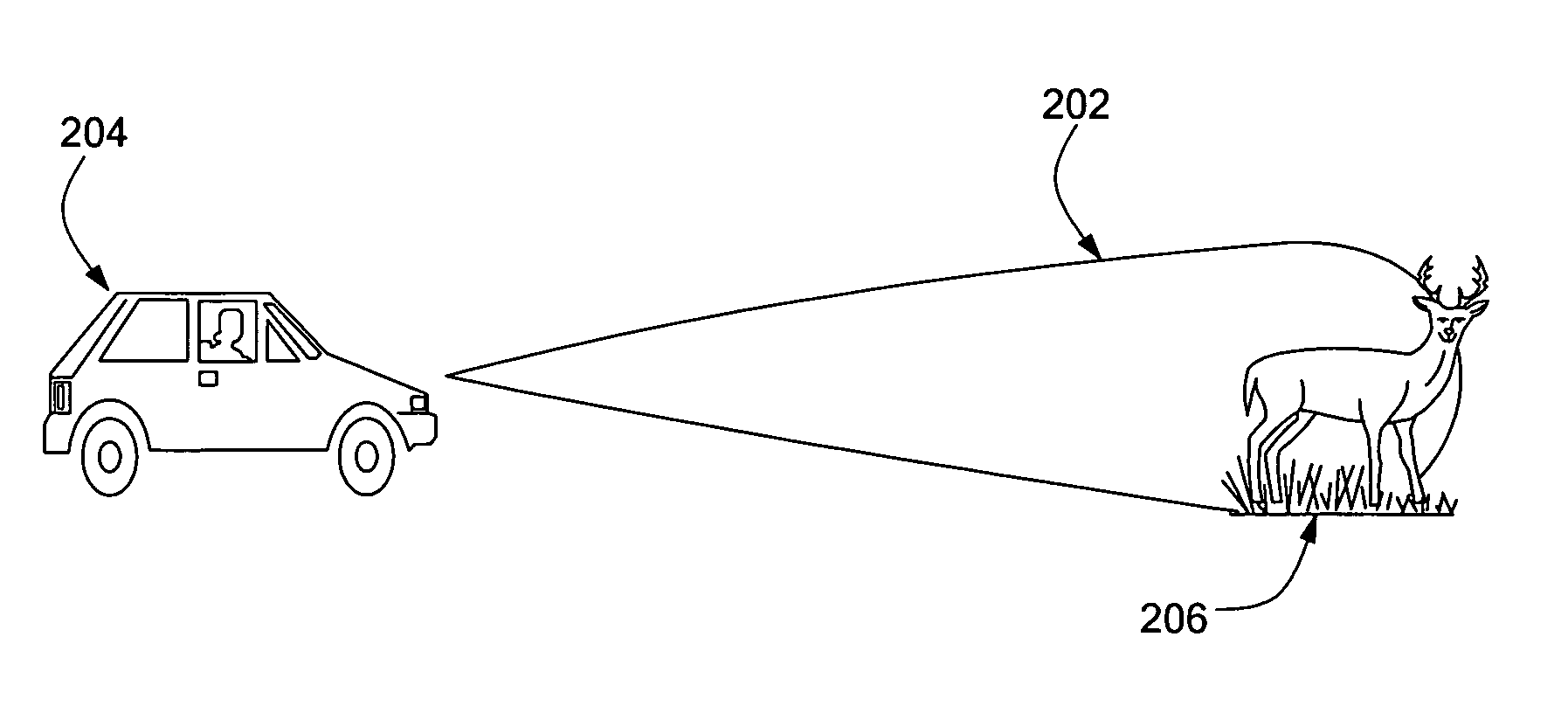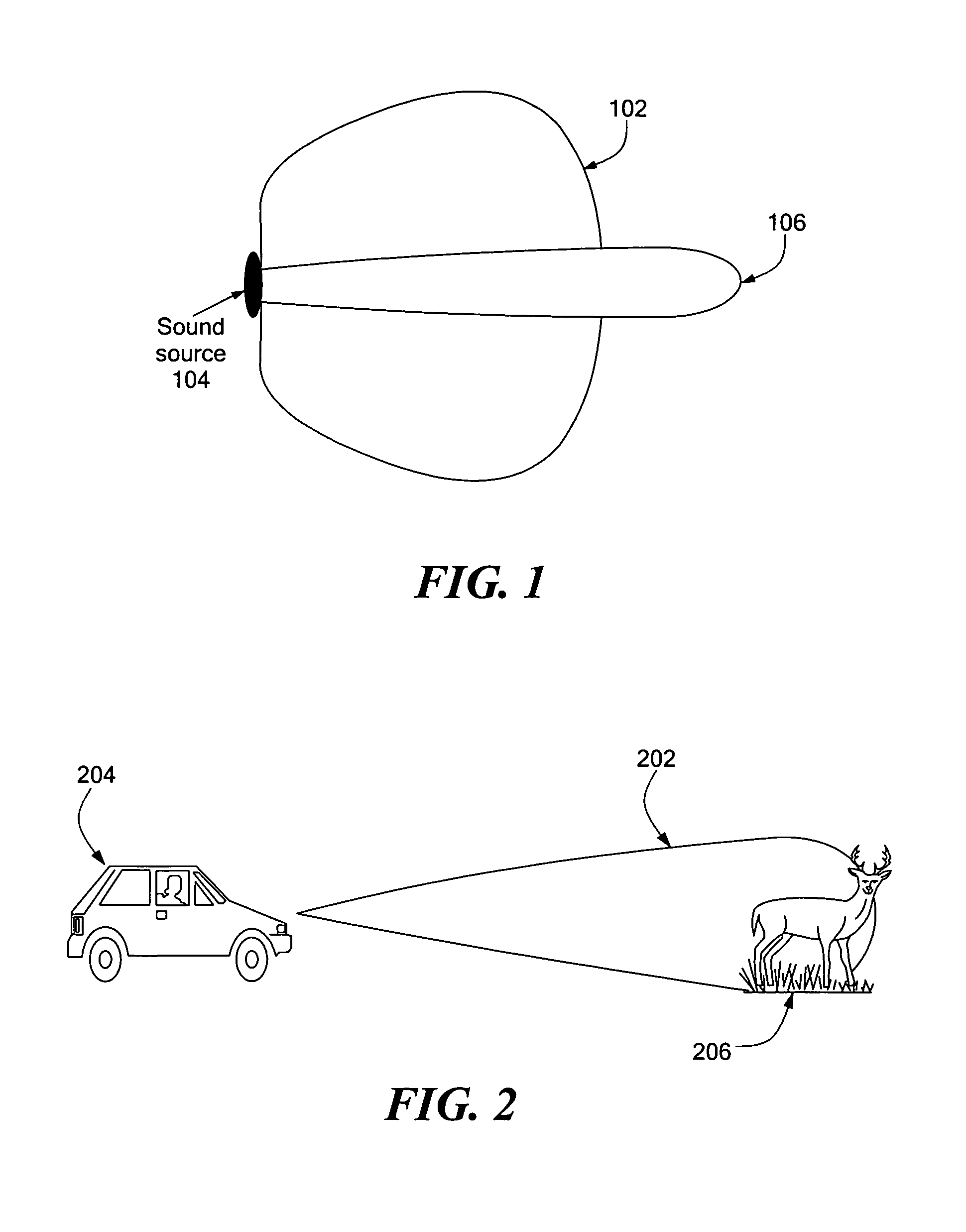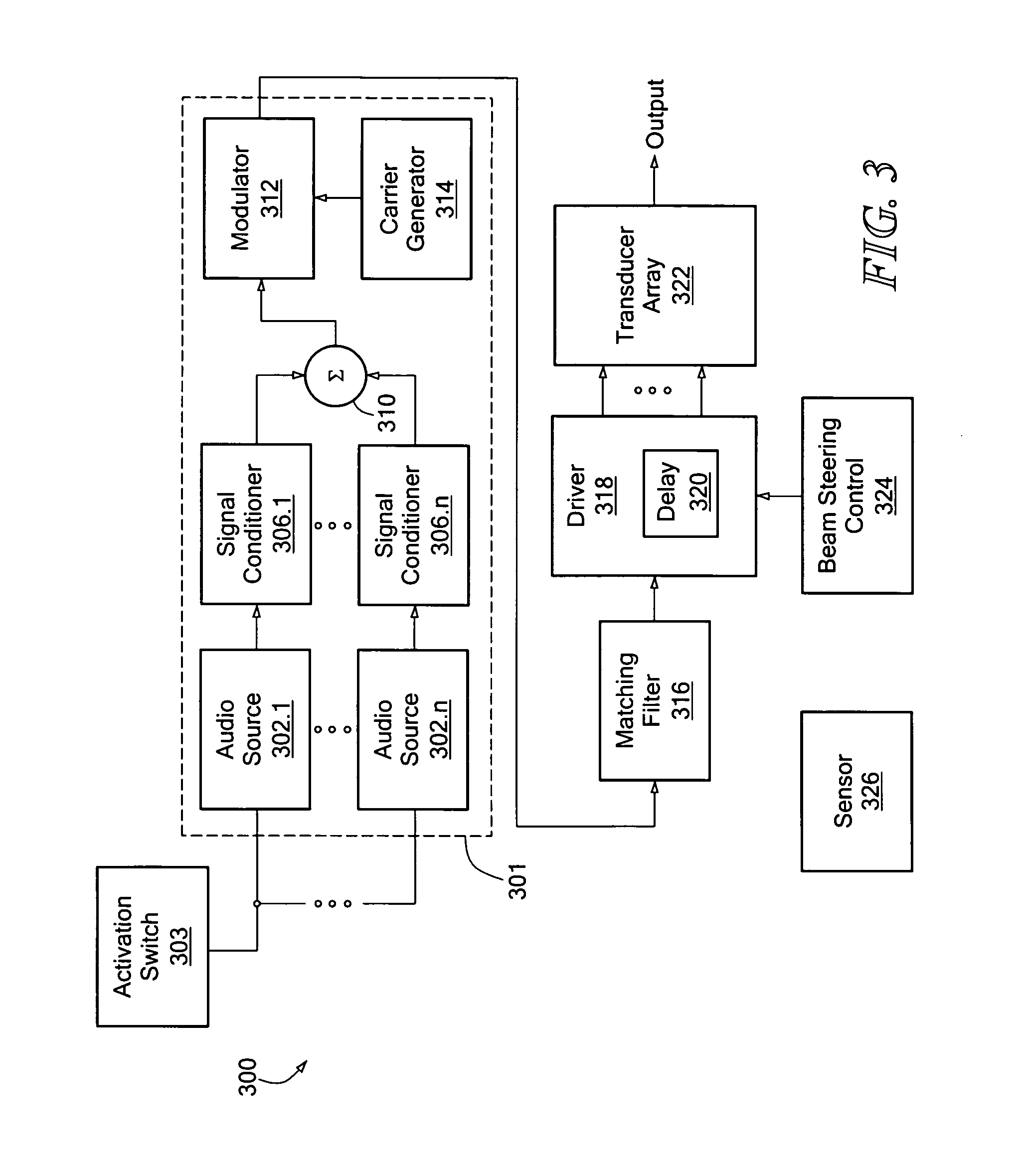Directional acoustic alerting system
a technology of directional acoustic alerting and warning systems, which is applied in the direction of contact mechanisms, relays, instruments, etc., can solve the problems of loud and harsh sounds generated by such systems, the intended recipient may not be sufficiently compelled to react to the sound, and the sound generated by such systems is often not heard by the intended recipien
- Summary
- Abstract
- Description
- Claims
- Application Information
AI Technical Summary
Benefits of technology
Problems solved by technology
Method used
Image
Examples
Embodiment Construction
[0024]U.S. Provisional Patent Application No. 60 / 316,062 filed Aug. 30, 2001 entitled DIRECTIONAL ACOUSTIC ALERTING SYSTEM is incorporated herein by reference.
[0025]An acoustic warning or alerting system is disclosed that can direct at least one audible warning signal to one or more intended recipients, while minimizing the chance that the warning signal will be heard by others within the proximity of the system. The presently disclosed directional acoustic alerting system includes a parametric array of acoustic transducers configured to generate one or more beams of audible sound with a directivity that is significantly greater than that of audio sound generated using conventional acoustic warning or alerting techniques.
[0026]FIG. 1 depicts an illustrative distribution 102 of audio sound generated by a conventional acoustic warning or alerting system (not shown) at a sound source location 104, and an illustrative distribution 106 of a narrow audio beam generated by a directional ac...
PUM
 Login to View More
Login to View More Abstract
Description
Claims
Application Information
 Login to View More
Login to View More - R&D
- Intellectual Property
- Life Sciences
- Materials
- Tech Scout
- Unparalleled Data Quality
- Higher Quality Content
- 60% Fewer Hallucinations
Browse by: Latest US Patents, China's latest patents, Technical Efficacy Thesaurus, Application Domain, Technology Topic, Popular Technical Reports.
© 2025 PatSnap. All rights reserved.Legal|Privacy policy|Modern Slavery Act Transparency Statement|Sitemap|About US| Contact US: help@patsnap.com



